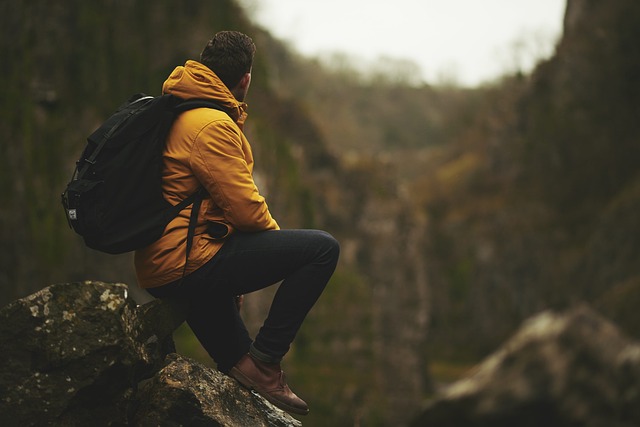Thru-hiking
Thru-hiking is a remarkable endeavor that captures the spirit of adventure and endurance. It refers to the act of hiking a long-distance trail from start to finish without any interruptions, completing the entire route in one continuous journey. Whether it’s the legendary Appalachian Trail, the breathtaking Pacific Crest Trail, or any of the numerous other trails around the world, thru-hiking demands physical stamina, mental resilience, and a deep connection with nature. This pursuit is not merely a physical challenge; it is an opportunity for self-discovery, exploration of the natural world, and an immersion into a unique community of hikers. Thru-hiking presents an unparalleled experience of personal growth, pushing boundaries, and forging unforgettable memories along the way.

Thru-hiking challenges
Thru-hiking presents a multitude of challenges that test both the physical and mental fortitude of hikers. Here are some of the common challenges encountered during a thru-hike:
-
Physical Endurance: Thru-hiking demands exceptional physical stamina as hikers cover long distances on a daily basis, often carrying a heavy backpack. The repetitive strain on the body, including the feet, legs, and back, can lead to blisters, muscle fatigue, and joint pain.
-
Weather Conditions: Thru-hikers are exposed to a range of weather conditions, from scorching heat to freezing cold, torrential rains to snowstorms. Enduring extreme weather requires proper gear and clothing, as well as the ability to adapt and make decisions to ensure safety.
-
Supply Management: Managing food, water, and other essential supplies along the trail can be challenging. Thru-hikers need to plan resupply points, calculate their daily caloric needs, and ensure access to clean water sources. This logistical challenge becomes even more critical in remote or less populated areas.
-
Mental Resilience: Thru-hiking is as much a mental challenge as it is a physical one. Hikers often face loneliness, solitude, and moments of self-doubt during the long stretches of solitude on the trail. Dealing with the monotony, staying motivated, and maintaining a positive mindset can be mentally demanding.
-
Navigation and Trail Conditions: Thru-hikers must navigate through various terrains, including steep ascents, rocky trails, dense forests, and river crossings. Navigation skills and map reading are crucial to staying on the correct path. Additionally, trail conditions can change due to weather, fallen trees, or trail maintenance, adding an element of unpredictability.
Overcoming these challenges requires determination, adaptability, and the ability to problem-solve on the go. Thru-hiking is a transformative journey that pushes individuals beyond their limits, fostering personal growth and resilience along the way.

Thru-hiking equipment
Thru-hiking like other types of long-distance hiking types requires a careful selection of equipment to ensure comfort, safety, and efficiency on the trail. While the specific gear may vary depending on the trail and personal preferences, here is a list of essential equipment commonly used by thru-hikers:
- Backpack: A lightweight and durable backpack with sufficient capacity to carry all gear and supplies for the duration of the hike.
- Tent or Shelter: A lightweight tent, hammock, or shelter system that provides protection from the elements and insects during overnight stays on the trail.
- Sleeping Bag and Sleeping Pad: A high-quality sleeping bag that is suitable for the expected weather conditions and a comfortable sleeping pad for insulation and cushioning on the ground.
- Clothing: Layered clothing suitable for various weather conditions, including moisture-wicking base layers, insulating mid-layers, a waterproof and breathable jacket, hiking pants or shorts, socks, and sturdy hiking boots or trail running shoes.
- Food and Cooking Equipment: Lightweight and compact camping stove, cooking pot, utensils, and a bear canister or food storage bag for protecting food from wildlife.
- Water Filtration System: A water filter or purifier to ensure access to safe drinking water along the trail. Options include portable water filters, water purification tablets, or a UV light purifier.
- Navigation Tools: Detailed maps, a compass, and a GPS device or smartphone app for navigation. It’s also advisable to carry a backup battery or power bank for electronic devices.
- Lighting: A headlamp or flashlight with extra batteries for visibility during night hiking or in low-light conditions.
- First Aid Kit: A lightweight first aid kit containing essential items such as bandages, blister treatment, pain relievers, antiseptic wipes, and any personal medications.
- Hygiene Items: Items such as toilet paper, hand sanitizer, toothbrush, toothpaste, and biodegradable soap for maintaining hygiene on the trail.
- Trekking Poles: Adjustable trekking poles for stability, especially on steep ascents and descents, which can help reduce strain on the knees and improve balance.
- Repair Kit: A small repair kit including duct tape, a sewing needle and thread, and extra cordage for repairing gear or equipment in case of damage.
Thru-hikers often adopt a lightweight and minimalist approach, carefully considering each item’s weight and functionality. It’s crucial to research and test gear before embarking on a thru-hike to ensure its reliability and suitability for the specific trail and anticipated conditions.
Thru-hiking FAQs
Q: Where do you sleep during thru-hiking?
A: During thru-hiking, hikers have various options for sleeping arrangements. Many choose to use lightweight tents or hammocks to set up camp along the trail, utilizing designated campsites or finding suitable spots in the wilderness. Some thru-hikers may also opt for trail shelters or huts provided along certain long-distance trails. Additionally, there are occasional opportunities to stay in hostels, lodges, or even arrange for resupply stops in nearby towns, where accommodations such as hotels or motels are available.
Q: What are the most common thru-hiking injuries?
A: Foot-related injuries, such as blisters, plantar fasciitis, and ankle sprains, are prevalent due to the repetitive impact and long hours of walking. Overuse injuries like tendonitis and stress fractures can also occur, primarily in the feet, knees, or hips. Additionally, hikers may encounter minor cuts, scrapes, and insect bites, which can be managed with proper first aid and preventative measures.
Trails
Nature
Forest
Mountain
Coastal
Urban
''The journey of a thousand miles begins with a single step.''

